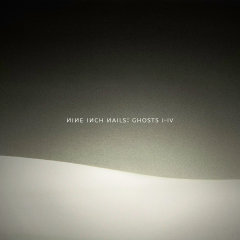Keyboard languages, language communities and national communities
I hate the the Keyboard Indicator applet on my Fedora/GNOME desktop.
![[keyboard applet]](http://nicubunu.ro/pictures/keyboard_props.png)
My (physical) keyboard, as virtually all keyboards sold in my country (Romania), has an US layout. And I, as a large majority of people around, write without diacritics (ă, â, î, ş, ţ). Except in the cased when I really need diacritics or the euro symbol (€). So I have to change the keyboard configuration, and for my own use the "programmers" version of the Romanian layout (the default Romanian layout in Fedora) is the best: it is identical with the US layout, so the print on my keys remains usable and I get diacritics with AltGr+a for ă, AltGr+s for ş, AltGr+e for € and so on. Which is nice. But I still hate the applet.
As shown in the screenshot above, the applet display a text, "Rou" in my case, instead of flag icons. While I know the argument why the flags were replaced with text a long time ago and it make sense (flags are symbols for countries, which represent political entities, not languages and their use may get you into nasty nationalistic conflicts), I sincerely don't care. I want pretty pictures, my desktop to look nice, with icons on the panel, not with boring text. So the best option for me is to stay with one single layout and not use the applet at all.
I used to argue for the flags, as I believe we should grow up and get past those artificial issues, here is an example: using a Hungarian flag at a public event in Romania in 1990 was absolutely inflammatory, today we grew up as a community and people do not react seeing those flags displayed. But some happenings in the Fedora land made me see the issue from the other perspective and have a first hand understanding of why country-based communities are not such a good idea, so I have now something to put in balance.
I worked recently on a small graphic for the Fedora community of Moldova and I tried to find some way of collaboration with our Fedora Romanian community. I ended by not finding any solid bridge, as they have almost all the valuable content in Russian, but it was an invaluable opportunity for me to contemplate this strange animal: a tri-lingual website, with a short English introduction, a lot of Russian content and some Romanian content.
I wonder what is the purpose of such a website? People searching the web for Fedora content in Russian will land in a Russian website, people searching for Romanian content will land on a Romanian site. If they will open a forum, what's the point for an user to join that forum instead of going to a larger Russian or Romanian forum? This is, IMO, the best example for the futility of a country-based community.
But I still hate the keyboard applet and would prefer it to have flags

PS: And here is a pretty picture for the knowledgeable ones:
![[languages fedora]](http://nicubunu.ro/pictures/languages_fedora.png)
![[diablo2]](http://nicubunu.ro/pictures/diablo2hell.jpg) This isn't exactly true, I am not so unimaginative that I can't come with a cool (my own idea of cool) image. By the contrary: the first image in my head is about sulphur being the fuel of hell. I can see an image with rivers of molten, red, sulphur, something in the style of the Act IV (Hell) from Diablo II. You know, something that will make you to smell the hell.
This isn't exactly true, I am not so unimaginative that I can't come with a cool (my own idea of cool) image. By the contrary: the first image in my head is about sulphur being the fuel of hell. I can see an image with rivers of molten, red, sulphur, something in the style of the Act IV (Hell) from Diablo II. You know, something that will make you to smell the hell.![[ubuntu]](http://nicubunu.ro/pictures/ubuntunaked.jpg) Since I talked about naked people, I should expand more on that. Of course I don't argue about using naked people in Fedora themes, that would me just lame: it was done, repeating it is unimaginative. I am talking about this level of boldness: can you imagine we can come with something that bold in a release?
Since I talked about naked people, I should expand more on that. Of course I don't argue about using naked people in Fedora themes, that would me just lame: it was done, repeating it is unimaginative. I am talking about this level of boldness: can you imagine we can come with something that bold in a release?
![[gold blue]](http://fedora.nicubunu.ro/blog/gold-blue.jpg)
![[gold blue]](http://fedora.nicubunu.ro/blog/paper-blue.jpg)
![[Fedora 9 - 21 days remaining]](http://fedoraproject.org/static/images/counter/en/fedora9-countdown-21.en.png)
 There are times when every bit of logic in your brain, every bit of past experience and every bit of common sense tells you to not do something and you still do it. In your personal life, in your professional life, whatever. Such is the case with me proposing the
There are times when every bit of logic in your brain, every bit of past experience and every bit of common sense tells you to not do something and you still do it. In your personal life, in your professional life, whatever. Such is the case with me proposing the ![[pocket watch]](http://nicubunu.ro/pictures/clockwork.jpg)
![[poster]](http://fedora.nicubunu.ro/artwork/wall/corkboard_thumb.png)
![[poster]](http://fedora.nicubunu.ro/artwork/wall/voice_thumb.png)
![[fedora 10]](http://fedora.nicubunu.ro/banners/images/f10_steampunk.png)
![[fedora 10 clockwork]](http://fedora.nicubunu.ro/artwork/splash/clockwork_paper.jpg)
![[fedora 10 clockwork]](http://fedora.nicubunu.ro/artwork/splash/clockwork_gold.jpg)
![[counter spotted]](http://fedora.nicubunu.ro/blog/f9counter_potuguese.png)
![[counter spotted]](http://fedora.nicubunu.ro/blog/f9counter_romanian.png)
![[27 days remaining]](http://fedora.nicubunu.ro/blog/fedora9-countdown-27.png)
![[copyright infringement?]](http://nicubunu.ro/pictures/catavencu_gimp_manac.jpg)
![[screenshot]](http://nicubunu.ro/pictures/f9beta/preview.jpg)
 Now that we are out of the embargo and can talk freely about the release, here is the news item: after over one year of waiting (and a couple of weeks of stealth status),
Now that we are out of the embargo and can talk freely about the release, here is the news item: after over one year of waiting (and a couple of weeks of stealth status), ![[cd label]](http://fedora.nicubunu.ro/cdart/sulphur/cdlabel_sulf1_thumb.png)
![[cd label]](http://fedora.nicubunu.ro/cdart/sulphur/cdlabel_sulf2_thumb.png)
![[cd label]](http://fedora.nicubunu.ro/cdart/sulphur/cdlabel_sulf3_thumb.png)
![[phone]](http://nicubunu.ro/pictures/voip841.jpg) Recently someone asked me to help him with the configuration (it was absolutely painless) of a cordless Internet/ DECT phone, VOIP841. Is a nice, even if a bit pricey IMO, phone made by Philips, able to call land lines, Skype network (without the need of a PC), use multiple handsets (and have calls between those handsets too)... but enough with the praises, I am not a Philips sales agent.
Recently someone asked me to help him with the configuration (it was absolutely painless) of a cordless Internet/ DECT phone, VOIP841. Is a nice, even if a bit pricey IMO, phone made by Philips, able to call land lines, Skype network (without the need of a PC), use multiple handsets (and have calls between those handsets too)... but enough with the praises, I am not a Philips sales agent.![[grub splash]](http://nicubunu.ro/pictures/grub/grubpreview_indexed.png)
![[grub splash]](http://nicubunu.ro/pictures/grub/grubpreview.png)
![[dithering]](http://nicubunu.ro/pictures/grub/screenshot.png)
![[grub splash]](http://nicubunu.ro/pictures/grub/grubpreview_indexed10.png)
![[grub splash]](http://nicubunu.ro/pictures/grub/grubpreview_indexed1.png)
![[grub splash]](http://nicubunu.ro/pictures/grub/grubpreview_indexed20.png)
![[grub splash]](http://nicubunu.ro/pictures/grub/grubpreview_indexed2.png)
![[grub splash]](http://nicubunu.ro/pictures/grub/grubpreview_indexed3.png)
![[illustrator import]](http://nicubunu.ro/pictures/inkscape/ai_import.jpg)
 With all this fuss about the
With all this fuss about the ![[8 kingdoms]](http://nicubunu.ro/pictures/games/8kingdoms.jpg)
![[ocal]](http://nicubunu.ro/pictures/ocal/ocal6660.png)
![[ocal]](http://nicubunu.ro/pictures/ocal/ocal6666.png)
![[ocal]](http://nicubunu.ro/pictures/ocal/ocal200802.png)
![[post-it <3 fedora]](http://fedora.nicubunu.ro/banners/images/fedora-postit_nicu.png)
![[post-it banner <3 fedora]](http://fedora.nicubunu.ro/banners/images/fedora-postit.png)
![[t-shirt <3 fedora]](http://fedora.nicubunu.ro/artwork/artwork/tshirt_love.png)

 I present you the daily SVG snapshot: a large tarball containing all the SVG and SVGZ files from our ccHost installation. Today's (the first) snapshot is 156 MB (tar.bz2, it extracts in about 600 MB) and contain over 8.000 images (all of them released as Public Domain).
I present you the daily SVG snapshot: a large tarball containing all the SVG and SVGZ files from our ccHost installation. Today's (the first) snapshot is 156 MB (tar.bz2, it extracts in about 600 MB) and contain over 8.000 images (all of them released as Public Domain).


